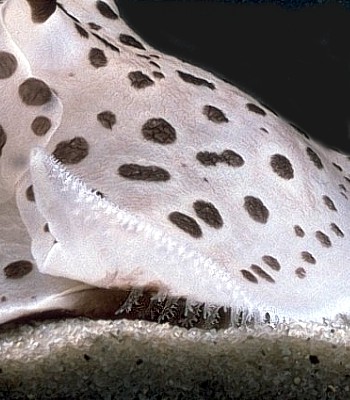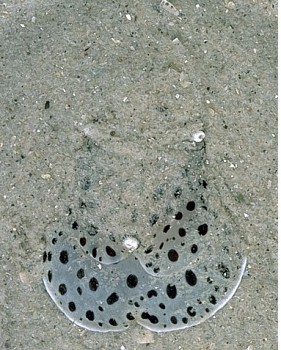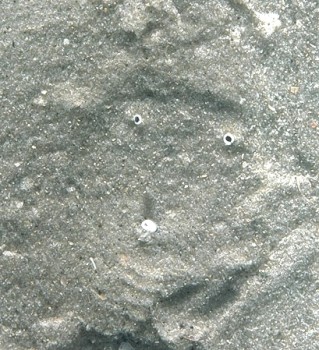
Euselenops luniceps
Page 2 - adaptations for a sandy habitat.
PHOTO
UPPER RIGHT: Close up of right side of head showing fine sensory papillae along the edge of the oral veil, and long branches sensory papillae on the underside of the veil.
LOWER LEFT: Showing animal burrowing into sand.
LOWER RIGHT: Buried animal with tips of the two rhinophores and pallial siphon just poking out of sand.
Port Stephens, New South Wales, Australia, May 1990, 75mm long. PHOTOS: Bill Rudman.
Euselenops luniceps is a sand-dwelling pleurobranch which has many features in common with other quite unrelated sea slugs which also live in a sandy environment. They all have a very broad foot and relatively flattened body which is ideal for crawling over soft sand and for burrowing. They also all have a wide oral veil with sensory papillae, or in the case of Cerberilla long sensory oral tentacles, for hunting and locating their food.
In Euselenops there are fine sensory papillae along the leading edge of the oral veil, and on the underside of the oral veil their are longer branced papillae as well. While lying buried Euselenops can retain a flow of water through its gills for respiration and also remain alert to the presence of potential food nearby by sensing chemicals in the water with it rhinophores.
Other sand dwelling nudibranchs with similar adapations are:
Kalinga ornata
Armina cygnea
Melibe viridis
Tritonia diomedea
and many species of Cerberilla.
See Mary Jane Adam's message describing observations on Euselenops, Melibe & Kalinga together in Papua New Guinea.
Return to Euselenops luniceps Page.


Rudman, W.B., 1999 (December 1) Euselenops luniceps Page 2 - adaptations for a sandy habitat.. [In] Sea Slug Forum. Australian Museum, Sydney. Available from http://www.seaslugforum.net/factsheet/euseluni2
